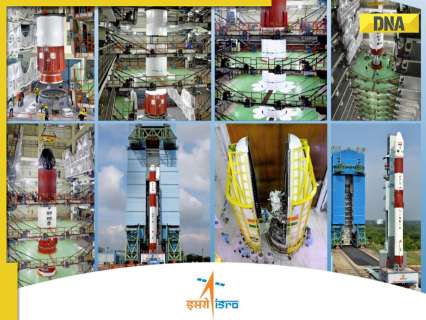
These groundbreaking contributions from Karnataka’s engineering colleges are part of a larger tapestry of innovation woven into the SpaDeX mission. The mission itself, a cost-effective endeavor utilizing the reliable PSLV rocket, is a testament to India’s prowess in space technology.
In a monumental stride for India’s space program, the Sri Adichunchanagiri Shikshana Trust is making waves, not just on Earth but in the cosmos. Its renowned SJC Institute of Technology, Chickballapur, alongside Bengaluru’s RV College of Engineering, are pivotal to ISRO’s ambitious Space Docking Experiment (SpaDeX), a mission poised to redefine India’s capabilities in orbit. As ISRO gears up for the SpaDeX launch on December 30th at 9:58 PM, the nation watches with bated breath, anticipating a new dawn in its space exploration narrative.
Under the aegis of Jagadguru Sri Sri Sri Dr. Balagangadharanatha Maha Swamiji and guided by the visionary leadership of IIT alumnus Jagadguru Sri Sri Sri Dr. Nirmalanandanatha Maha Swamiji, the SJC Institute of Technology has etched its mark on the SpaDeX mission. Their ingenious contribution, the BGS ARPIT payload, is a marvel of communication engineering. Designed to transmit audio, text, and images from space to Earth via FM signals and the VHF band, BGS ARPIT is set to bolster amateur radio services globally.
Joining forces with SJC Institute is RV College of Engineering, contributing a crucial biological study to the mission. Their research into the growth kinetics of gut bacteria in the unique environment of space promises to unlock insights vital for astronaut health and the development of advanced bioprocesses.
These groundbreaking contributions from Karnataka’s engineering colleges are part of a larger tapestry of innovation woven into the SpaDeX mission. The mission itself, a cost-effective endeavor utilizing the reliable PSLV rocket, is a testament to India’s prowess in space technology. SpaDeX aims to master the intricate art of space docking – the precise merging of two spacecraft in orbit. This capability is not just a technical feat but a cornerstone for India’s future space aspirations, including human missions to the Moon, lunar sample return, and the establishment of the Bharatiya Antariksh Station (BAS).
The SpaDeX mission will see two small satellites, Chaser and Target, each weighing 220 kg, embark on a carefully choreographed dance in low Earth orbit. Launched together, they will initially separate, only to perform a series of precise maneuvers culminating in a delicate docking procedure. This “far rendezvous,” followed by a gradual reduction in distance, will showcase India’s mastery over orbital dynamics, with the satellites eventually docking at a relative speed of a mere 10 millimeters per second, despite hurtling through space at 28,800 kilometers per hour.
Beyond docking, SpaDeX is a platform for demonstrating in-orbit power transfer and collaborative operations between spacecraft. Furthermore, the mission’s PSLV Orbital Experimental Module-4 (POEM-4) will host 24 payloads, including 14 from ISRO and 10 from private organizations, a testament to India’s burgeoning NewSpace ecosystem fostered by IN-SPACe.
With SpaDeX, India is not merely conducting an experiment; it’s scripting its legacy. As the fourth nation to potentially master space docking, India is signaling its readiness to play a leading role in the next space age. The mission underscores a commitment to scientific advancement, technological innovation, and international collaboration.
As the countdown to launch begins, the world watches as India, propelled by the brilliance of institutions like Adichunchanagiri’s SJC Institute and RV College of Engineering, embarks on a journey that promises to elevate not just a nation but the collective aspirations of humanity towards the stars.
(The author of this article is a Defence, Aerospace & Political Analyst based in Bengaluru. He is also Director of ADD Engineering Components, India, Pvt. Ltd, a subsidiary of ADD Engineering GmbH, Germany. You can reach him at: girishlinganna@gmail.com)
(Disclaimer: The views expressed above are the author’s own and do not reflect those of DNA)





